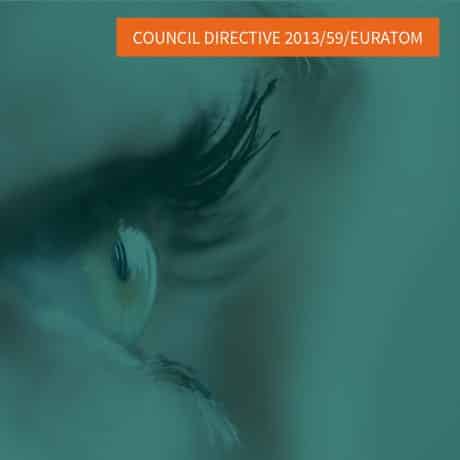
New dose limit for the eye lens under Directive 2013/59/Euratom
February 6, 2018 is an important date for medical staff exposed to x-rays, since that is when the Council Directive 2013/59/Euratom goes into effect. Published more than 4 years ago by the European Atomic Energy Community, the Directive limits the equivalent dose for the lens of the eye to 20 mSv in a single year or 100 mSv in any five consecutive years.
A growing awareness of the exposure of medical staff to x-ray
After focusing on reducing patient exposure to ionizing radiation for many years, the legislature is now focusing more firmly on the under-estimated dangers to practitioners of cumulative doses, which can cause serious health damages.
After all, medical staff in cath labs are constantly and repeatedly subject to ionizing radiation, while patients are treated only during a limited timeframe. Each operator performs up to several hundreds or even thousands of procedures per year, which corresponds to a whole body dose equivalent of 2,500 to 10,000 chest x-rays.
The lens in the Directive 2013/59/Euratom: scope
The Directive 2013/59/Euratom limits the equivalent dose for the lens to 20 mSv per year or 100 mSv over a period of five consecutive years, as long as the dose received during the course of one year does not exceed 50 mSv. In France, the equivalent dose limit for the lens is thus lowered to 20 mSv over 12 consecutive months for category “A” workers, compared to 150 mSv previously (respectively 15 mSv and 45 mSv for category “B” workers).
The equivalent dose is the absorbed dose in a tissue or an organ (such as the hands or the eyes). The effective dose is the sum of the weighted equivalent doses in all the tissues and organs of the body. As a reminder, in France, the annual effective dose accepted for category “A” workers has constantly been reduced, since 1928, to reach 20 mSv in 1990: a value that is still valid nowadays.
An effective measure in the prevention of a certain type of cataracts
The eye lens is one of the most radiosensitive tissues in the body, and consequently the development of cataracts is one of the primary health complications observed in cath lab staff.
According to the International Atomic Energy Agency (IAEA), exposing eyes to excessive radiation results in aberrant crystalline protein folding and dysregulation of lens morphology, causing cortical and posterior subcapsular cataracts. These two types of cataracts are symptomatic of repeated exposure to radiation and differ from the nuclear cataract, the most common type of age-related cataract.
Increased radiation protection in cath labs
The Directive 2013/59/Euratom marks a real step forward in reducing exposure of medical staff. With this new directive, the trend of implementing the precautionary principle is clearly confirmed, with as a corollary, greater radiation protection in operating rooms. In this regard, a report of the IRSN (Radiation protection and Nuclear Safety Institute in France) states that, despite the difficulty of assessing the exposure of the lens of the eye, there are effective radiation protection measures for interventional radiology, such as lead glasses, lead face shields, ceiling screens and radiation protection cabins.
To learn more, download here the white paper on “X-ray dangers in interventional cath labs“.









